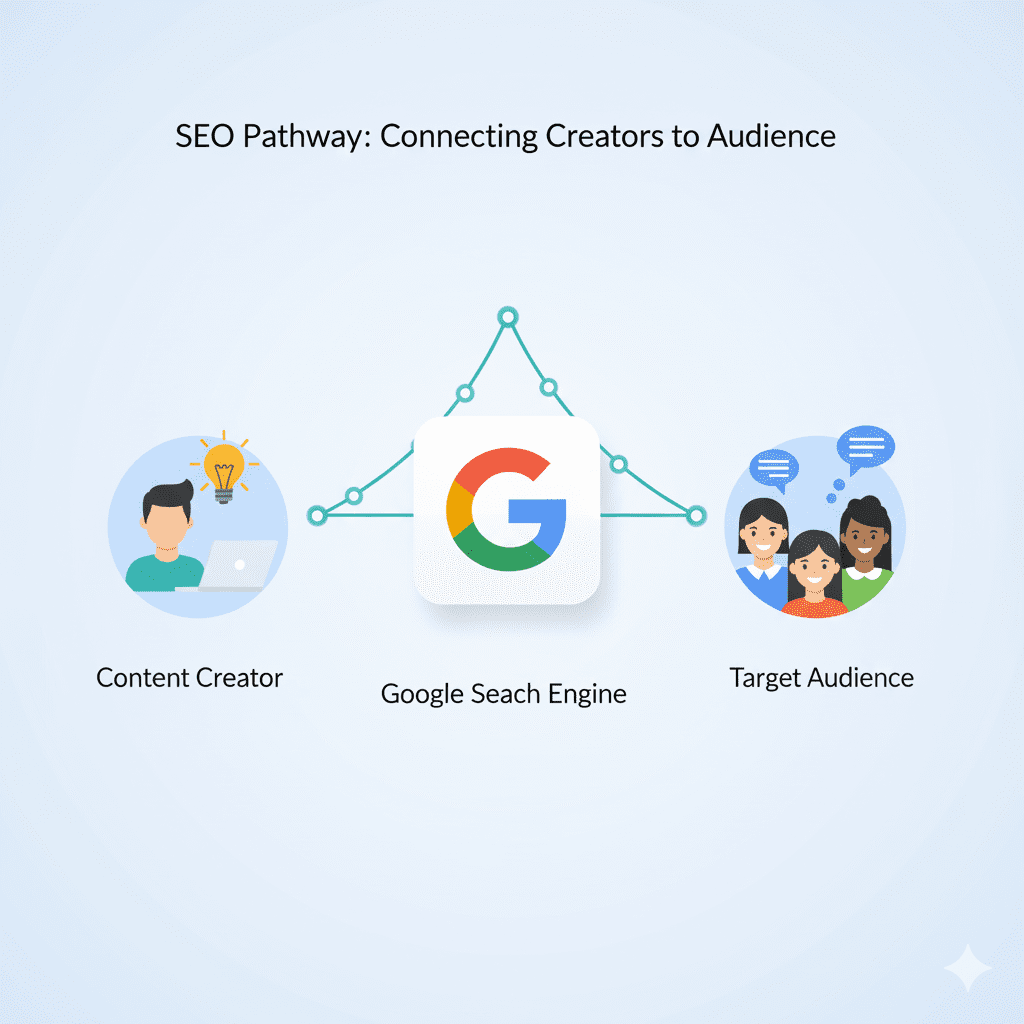Structuring a blog post effectively is one of the most important skills for anyone focused on search engine optimization. Understanding the right blog post SEO structure helps both readers and search engines navigate your content efficiently. While quality writing is essential, it’s not enough on its own. Google doesn’t rank based on writing talent—it ranks based on how well a piece of content is structured.
Knowing how to structure a blog post for SEO is the difference between a hidden article and one that consistently attracts traffic. Structure provides a roadmap for both readers and search engines, improving clarity, readability, and ranking potential.
This smart creator’s guide outlines a strategic framework—from meta tags to call-to-action—designed to boost SEO and make each post more impactful. For related insights, see AI Tools for Bloggers.
Table of Contents
TogglePhase 1: The Foundation – Why Structure is SEO
The Dual Purpose of Excellent Structure
Effective blog structure serves two key purposes:
Search Engines (Google Bots): A well-organized format using H1, H2, and H3 tags helps bots scan and understand content quickly. This clarity supports indexing and ranking.
Readers (User Experience): Most users skim before they read. Proper headings, short paragraphs, and bullet points help readers absorb key ideas, increasing engagement and dwell time.
A clear blog post SEO structure improves readability and boosts ranking signals.
The “Inverted Pyramid” Content Model
A proven method for SEO-friendly structuring is the Inverted Pyramid:
Top: Most important information (Title, Introduction, Key Takeaway)
Middle: Supporting details, examples, and explanations
Bottom: Background info, optional extras, and call-to-action
This model ensures the audience finds answers fast—an important part of matching search intent.
Phase 2: Optimizing the Top-Level Elements
1. The Title Tag and H1 (The First Impression)
These are critical for search visibility and user engagement.
Title Tag (SEO Title):
Include the primary keyword close to the start
Keep under 60 characters
Use numbers or power words (e.g., “Smart,” “Ultimate”) to boost CTR
H1 (Visible Page Title):
Use only one H1 per page
Match search intent clearly and include the primary keyword
2. The Introduction (PK Hook)
A strong intro should:
Acknowledge a common challenge or question
Include the primary keyword naturally in the first sentence or two
Explain what the post will deliver
Combined with the title and URL, the introduction acts as a major SEO signal. For more on introductions, check outHow to Write Blog Introductions That Hook Readers.
Phase 3: Mastering the Blog Post SEO Structure
Clear hierarchy makes content easier to navigate and improves indexing.
1. H2 Subheadings (Main Sections)
Use H2s to divide the content into major steps or ideas.
Include secondary or long-tail keywords where appropriate
Creating an effective blog post SEO structure ensures users find information easily.
2. H3 Subheadings (Supporting Points)
Break down H2 sections using H3 tags.
Maintain logical flow: H1 → H2 → H3 (avoid skipping levels)
H3s guide skimmers and support topic clarity
3. Formatting for SEO
Beyond headings, format content for easier reading:
Keep paragraphs short (3–5 lines max)
Bold keywords or key points for quick scanning
Use bullet or numbered lists to simplify dense text
Explore more on this in Readability Tips for High SEO Ranking.
Phase 4: Technical and Visual Structure
Non-text elements also impact SEO and readability.
Image Optimization and Placement
Placement: Use a featured image below the H1; add others after major H2s
Alt Text: Include relevant keywords and describe the image context
File Names: Use keyword-rich, hyphenated filenames (e.g., structure-for-seo.jpg)
Internal and External Linking Strategy
Internal Links: Add 3–5 links to related posts using descriptive anchor text. For example, How to Sell Digital Products on Gumroad and Blog Content Planning.
External Links: Include 1–3 links to credible, non-competing sources such as Google Search Central Blog or Yoast SEO On-Page Guide.
Strategic linking improves authority, relevance, and user retention.
Phase 5: The Conclusion and Call-to-Action
The Summary and Takeaway
Use the conclusion to:
Recap the main sections
Mention the primary keyword once more
Reinforce the key message of the post
The Final CTA
Encourage the next step:
Ask a question to prompt comments (e.g., “Which part of this structure will you apply first?”)
Link to a related resource or offer to boost engagement or conversion
Final Words on Structuring a Blog Post for SEO
Learning how to structure a blog post for SEO is one of the most efficient ways to improve visibility, readability, and authority. A well-structured post benefits both search engines and human readers—turning solid content into a high-performing asset.
With consistent formatting, a clear hierarchy, optimized metadata, and strong internal linking, content becomes more discoverable and more impactful.
Structure is more than presentation—it’s the foundation of SEO success. Start applying these techniques to every blog post moving forward.
Frequently Asked Questions (FAQ)
1. What is a blog post SEO structure?
A blog post SEO structure refers to how a blog article is organized using headings, keywords, formatting, and linking strategies to improve its visibility on search engines and enhance user experience.
2. Why is structuring a blog post important for SEO?
Structure helps search engines understand the content and helps readers find information quickly. A clear structure improves readability, dwell time, and chances of ranking higher on Google.
3. How many headings should I use in a blog post?
Use H2s for main sections and H3s for sub-points. Ideally, include a heading every 250–300 words to maintain flow and readability.
4. Should I include images in my blog post for SEO?
Yes. Optimized images with descriptive alt text can enhance user engagement and provide SEO value, especially when the alt text includes relevant keywords.
5. How many internal and external links should I add?
Include at least 3–5 internal links to related content on your site and 1–3 external links to high-authority sources to support your claims and improve trustworthiness.

